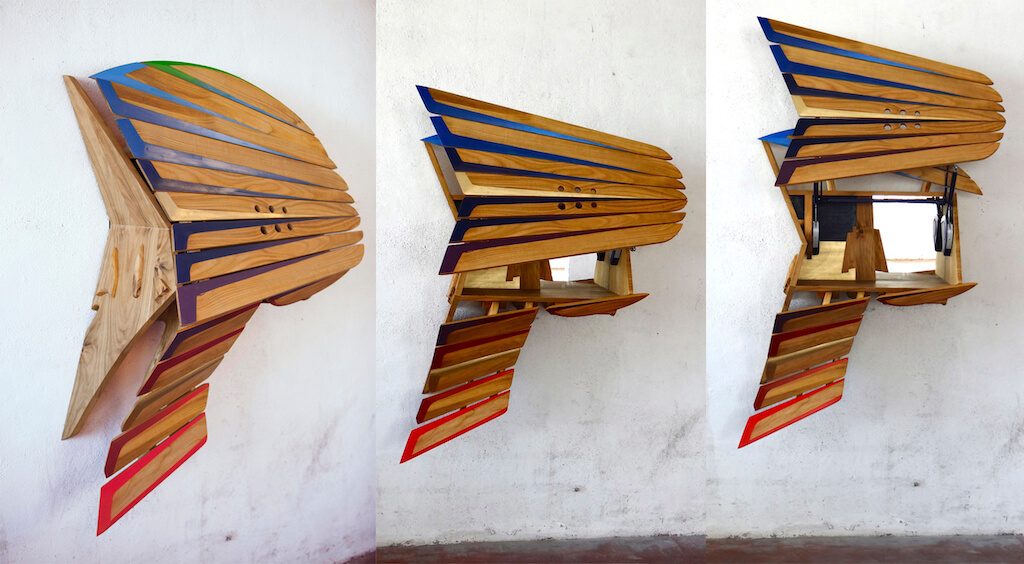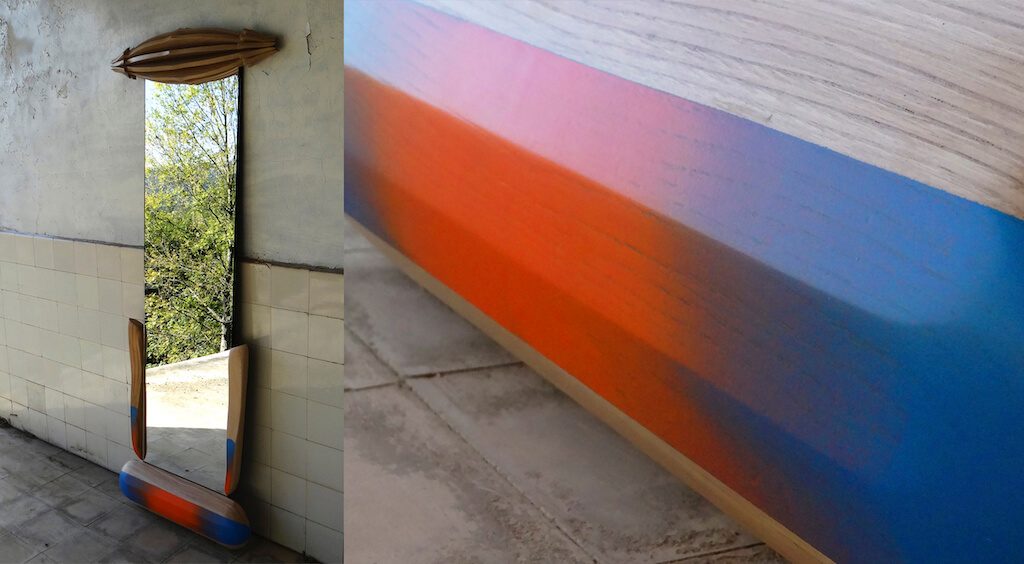Discovered at Concéntrico 2020, Art furniture collection presents Tuomas Kuure’ way of working wood and observing the world. The Finnish artist-maker, who crafts wooden art furniture in Bilbao (Spain), is executing all the working stages by himself. The pieces are inevitably unique due to a meticulous selection of the grain directions and the crafting process that often includes breaking the material. However, the potential of the designs is greater than an alone one-off piece. They can be regenerated through special editions changing the timber, details and colours.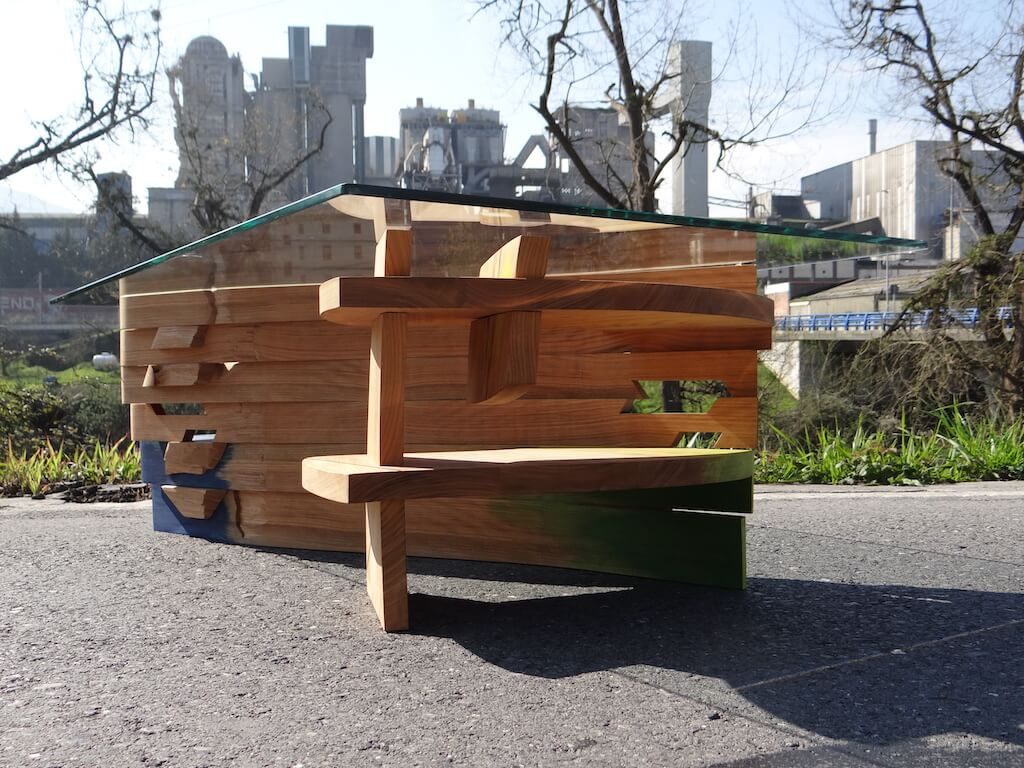 A piece of furniture can move us, make us think, guide us in front of the purest, most graceful landscapes of the human mind. Furthermore, because of some key differences in their respective working processes, there is a necessity for the definition of “art furniture”. There are many great craftsmen walking that path yet the pair of words seldomly appear together. Wendell Castle is said to be the father of the movement but also Wharton Esherick, George Nakashima and Sam Maloof have been strongly marking the way for today’s designers, functional sculptors or artists, whichever standpoint you choose.
A piece of furniture can move us, make us think, guide us in front of the purest, most graceful landscapes of the human mind. Furthermore, because of some key differences in their respective working processes, there is a necessity for the definition of “art furniture”. There are many great craftsmen walking that path yet the pair of words seldomly appear together. Wendell Castle is said to be the father of the movement but also Wharton Esherick, George Nakashima and Sam Maloof have been strongly marking the way for today’s designers, functional sculptors or artists, whichever standpoint you choose.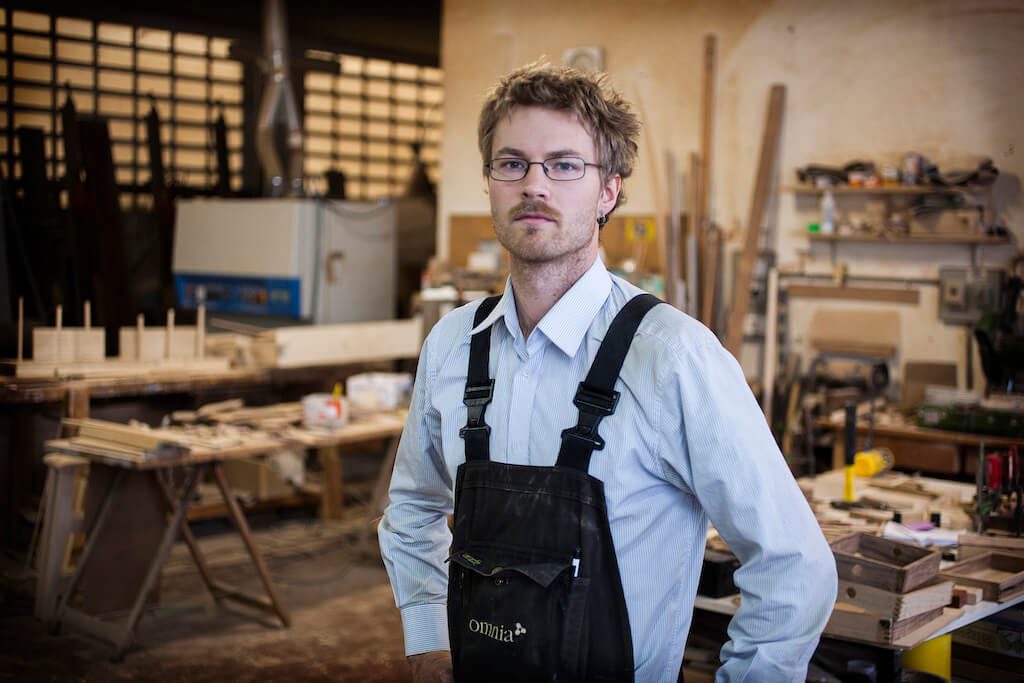
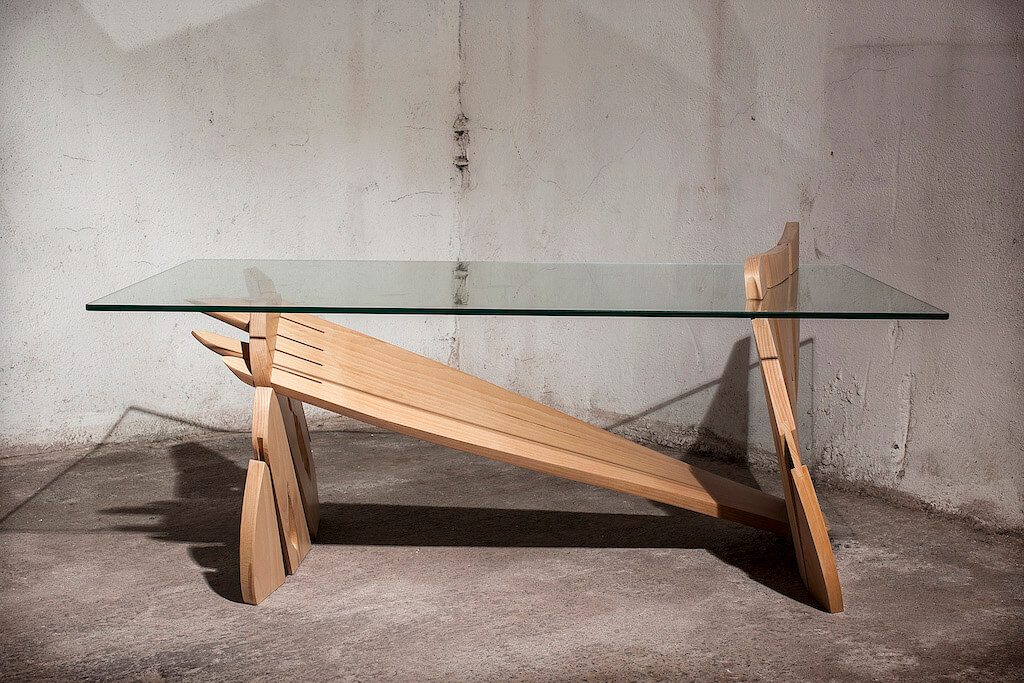
Sometimes expressing with abstract, others symbolic or impressionistic means, the concepts are well-fitting to the post-contemporary paradigm. The pieces are made by a person who couldn’t be a designer, a cabinet maker, a sculptor in this era but wanted to fly all the fields.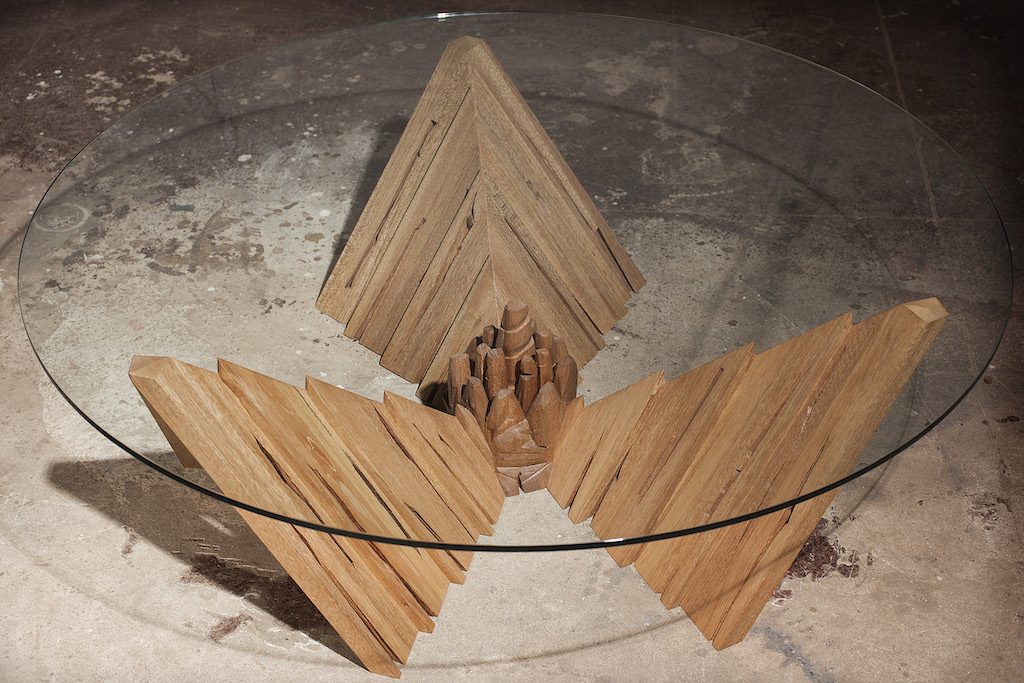
Coffee table in Balsa Wood. “In the top view of the piece appears the shape familiar to us from the ionizing radiation sign. The sediments and the fortuitous cracks that nature creates… path seen in the middle of the piece.”
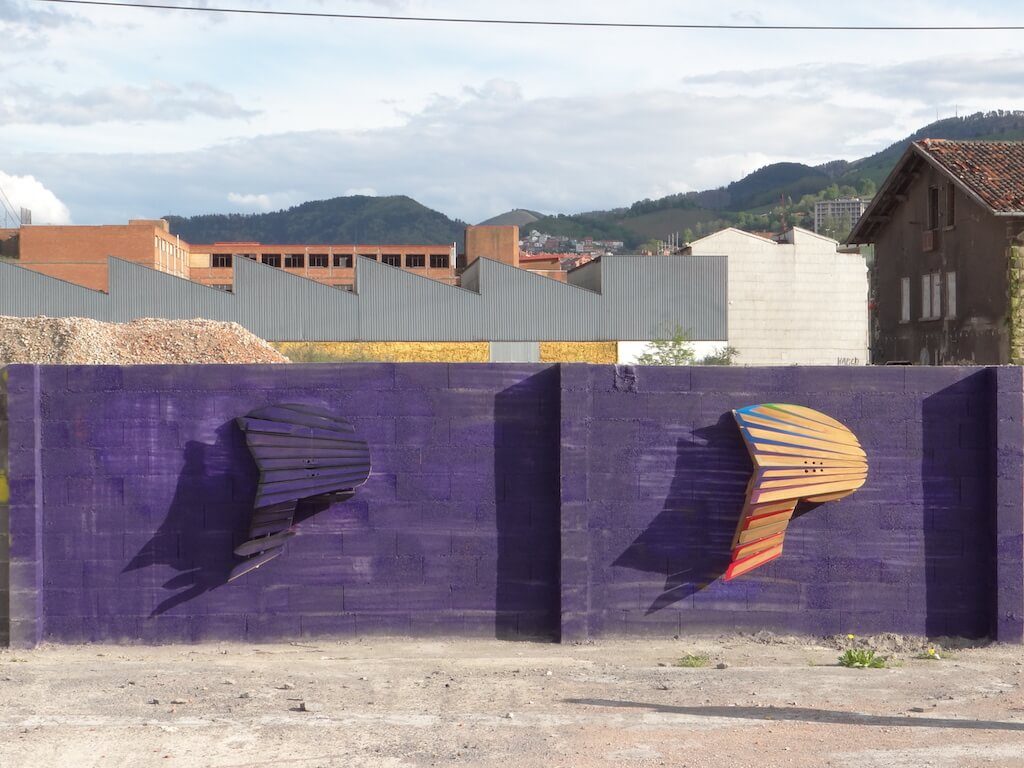
13 Minutes. Photo by Iranzu Guijarro
The bar cabinet can be viewed as a part of a 3,5-metre diameter clock. On the horizontal plane is the golden present, almost a perfect projection of its nearest past. As time goes by the reflection, also in the grain pattern, becomes less evident. The minutes stretch and shrink depending on their meaning to us. They change their colour and inclination with our moods and the surrounding events.
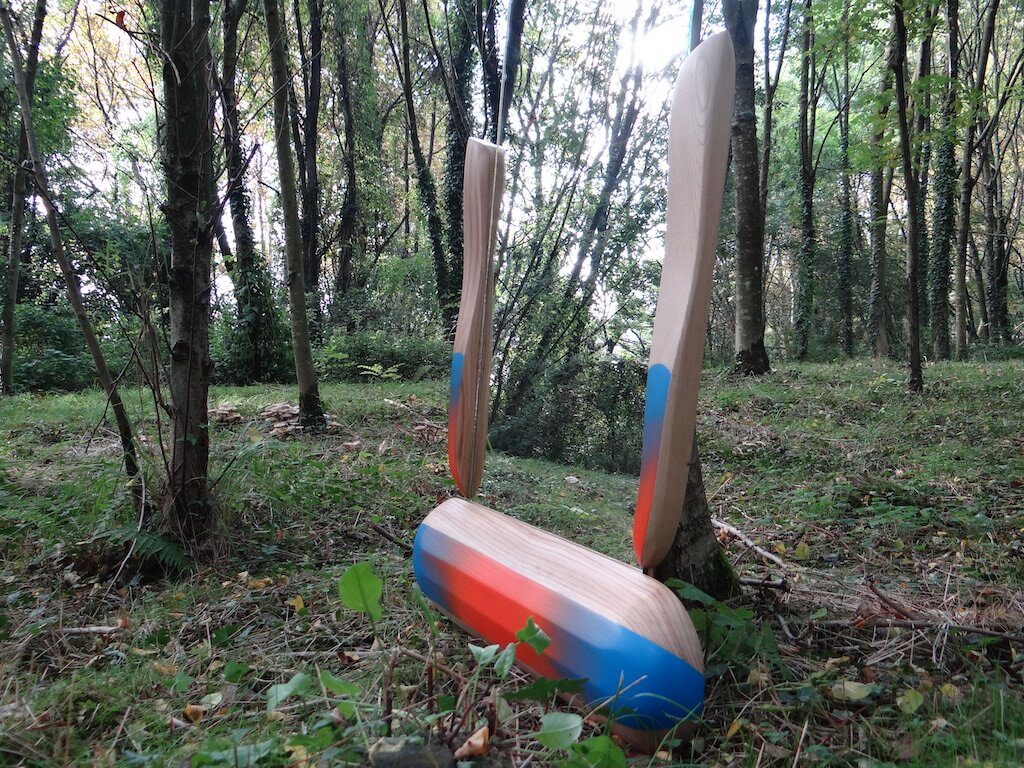
Causal. Photo by Iranzu Guijarro
“The grain colours of the two vertical pieces are very different from each other to point out how differently we are able to see ourselves depending on our current condition. The top part is oak, slightly darkened with ammonia to complement the chestnut. I wanted to have another specie of timber to further underline our layered state of being. Its shape and structure, together with the colours of the bottom are hinting the energy fields that are inextricably part of us.”

